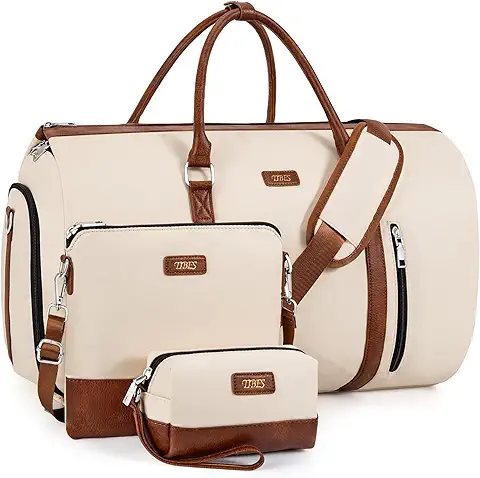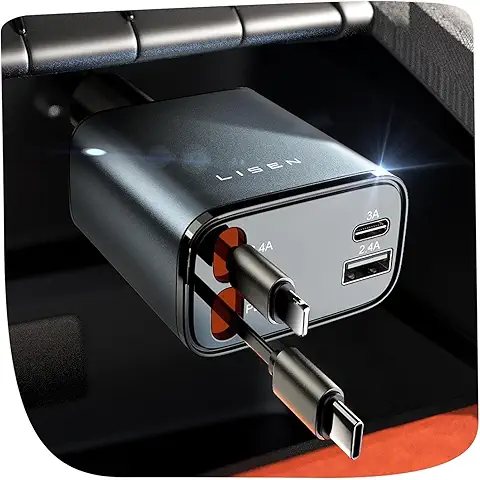How to Pack Light for Camping: Essential Gear and Strategies for a Hassle-Free Outdoor Adventure


Camping remains one of the most rewarding ways to escape the noise of modern life, immerse yourself in nature, and create lasting memories with family, friends, or even solo. But there’s a common problem that even experienced campers face: overpacking. The fear of leaving something important behind often leads to stuffing your pack with “just in case” items you never use, which means more weight, more hassle, and less enjoyment.
In 2025, packing light for camping isn’t just about saving your back. It’s about efficiency, sustainability, and smarter travel choices. Thanks to advancements in outdoor gear, minimalist packing strategies, and a growing eco-conscious culture, you can now bring everything you truly need without the extra bulk.
This comprehensive 2025 guide will show you:
- How to choose lightweight, multi-use camping gear
- Smart packing strategies to save space and weight
- Clothing tips for changing weather conditions
- Food and cooking solutions for minimalist camping
- Personal and safety essentials without the overload
- Sustainable and tech-forward tools for modern campers
Whether you’re heading out for a weekend getaway or a week-long wilderness trek, this guide will help you master the art of packing light while keeping comfort, safety, and enjoyment as top priorities.
Why Packing Light Matters More Than Ever in 2025
Packing light is no longer just a hiker’s bragging point, it’s a necessity for mobility, safety, and sustainability.

Benefits of going light in 2025:
- Physical Comfort – Less weight means reduced fatigue, better balance, and fewer aches during and after your trip.
- Increased Mobility – A lighter pack makes it easier to navigate tricky terrain or adapt quickly to unexpected route changes.
- Environmental Impact – Less gear means less manufacturing demand, lower transportation emissions, and smaller waste output.
- Sustainable Travel Alignment – Many campers in 2025 aim for zero-waste trips, reusable gear, and Leave No Trace ethics.
And with today’s ultralight tents, high-tech fabrics, and compact cooking systems, you can trim weight without sacrificing comfort or safety.
1. Prioritize Multi-Use Items to Maximize Efficiency
One of the most effective strategies for packing light is gear that serves multiple purposes. Every item should earn its place in your bag by doing more than one job.
Sleeping System
- Lightweight Sleeping Bag + Liner – Choose a sleeping bag rated for your destination’s lowest expected temperature. Modern down and synthetic bags now weigh under 2 lbs without losing warmth.
- Sleeping Bag Liner – Adds warmth in cold weather, doubles as a light blanket in summer, and keeps your bag clean to extend its lifespan.
Cooking Equipment
- Nesting Cookware – Look for pots, pans, and lids that stack together. Some lids now serve as frying pans or plates.
- Folding Utensils – Sporks and collapsible ladles save surprising amounts of space.
Hydration
- Bottle with Built-In Filter – Lets you refill from streams and lakes safely, reducing how much water you carry at once. Popular 2025 models can filter bacteria, protozoa, and even microplastics.
Pro Tip: Before adding a single-purpose item to your pack, ask yourself, “Can I use something I’m already bringing for this instead?”
2. Choose Lightweight, Compact Gear for Maximum Mobility
Thanks to materials like Dyneema, ultralight titanium, and recycled ripstop nylon, modern camping gear can be half the weight of older models.
Tent
- Ultralight Tents (1–2 People) – Many weigh just 2–3 lbs yet still handle heavy rain and wind. Look for quick setup designs and minimal pole systems.
- Alternative: For summer trips, consider a tarp shelter paired with a bug net for significant weight savings.
Sleeping Pad
- Inflatable Pads – Some now fold down to the size of a soda can while providing excellent insulation.
- Foam Pads – Bulkier, but lighter and virtually indestructible.
Backpack
- 40–50 Liter Lightweight Backpack – Ideal for 3–5 day trips. Prioritize adjustable straps, a supportive frame, and load-balancing features.
Pro Tip: Weigh every piece of gear before packing. You’ll be shocked how quickly ounces add up to pounds.
3. Clothing Essentials: The Power of Layering
The key to packing fewer clothes without sacrificing comfort is layering.
Base Layer
- Merino Wool or Technical Synthetics – Regulates temperature, wicks sweat, and resists odors.
Insulating Layer
- Down or Synthetic Puffer Jacket – Packs down to grapefruit size but traps body heat in cold conditions.
Outer Layer
- Waterproof, Breathable Rain Jacket – Protects against wind and storms. Choose models that fit over your other layers comfortably.
Footwear
- Trail Runners or Lightweight Hiking Boots – Ideal for most terrains unless you’re carrying heavy loads on rugged trails.
- Camp Shoes or Sandals – Ultra-light slip-ons for around camp.
Pro Tip: Stick to a neutral color palette so all clothing layers mix and match without clashing fewer pieces can create more outfits.
4. Streamline Cooking and Food Storage

Food is one of the heaviest items you’ll carry, so packing smart can shave off pounds.
Food Choices
- Freeze-Dried & Dehydrated Meals – Just add boiling water.
- High-Calorie Snacks – Nuts, dried fruit, jerky, and energy bars for easy trail fuel.
Cooking Gear
- Integrated Canister Stove Systems – Compact, fuel-efficient, and boil water in under 2 minutes.
- Minimal Utensils – A spork, small knife, and one small pot are usually enough.
Storage
- Collapsible Containers & Reusable Bags – Weigh almost nothing and pack flat.
- Bear-Proof Bags or Canisters – Required in certain parks check regulations.
5. Personal Items & Hygiene Essentials
Even when packing light, hygiene matters.
- Multi-Purpose Biodegradable Soap – Wash yourself, your clothes, and dishes with one product.
- Microfiber Towel – Dries fast and packs small.
- Travel-Size Toiletries – Toothbrush, toothpaste, small sunscreen, lip balm.
- Compact First-Aid Kit – Include blister care, pain relief, and personal medications.
6. Tools & Emergency Gear for Safety
When things go wrong, the right gear can be lifesaving , but it doesn’t need to be heavy.
- Multi-Tool – Knives, scissors, screwdrivers in one device.
- Rechargeable Headlamp – Preferably USB-C compatible for 2025 solar chargers.
- Fire Starter Kit – Waterproof matches, lighter, and magnesium striker.
- Compass & Paper Map – Electronics can fail; always have a backup.
- Emergency Blanket – Weighs just ounces but can retain body heat in emergencies.
7. Smart Packing Strategies for 2025
Packing light isn’t just about the gear you choose it’s also how you pack it.
- Compression Sacks – Reduce bulk of sleeping bags and clothes.
- Weight Distribution – Heavy items close to your back and mid-pack for balance.
- Accessibility – Keep frequently used items like snacks, rain jacket, or map at the top or in side pockets.
- Waterproofing – Use dry bags or pack liners to protect electronics and clothing.
8. Tech & Sustainability for the Modern Minimalist Camper
2025 campers have access to tools that make trips safer and greener.
Tech Upgrades
- Solar Chargers – Power devices without extra batteries.
- GPS Apps with Offline Maps – Download before you go; combine with paper map.
- Portable Water Purifiers – Filter viruses and microplastics.
Sustainable Practices
- Buy Gear Made from Recycled Materials – Many top brands now offer carbon-neutral products.
- Repair Instead of Replace – Patch kits extend gear life and reduce waste.
- Leave No Trace – Minimize campfire impact, pack out all trash, and respect wildlife.
9. The Complete 2025 Lightweight Camping Checklist
Shelter & Sleep
- Ultralight tent/tarp
- Sleeping bag + liner
- Sleeping pad
Cooking & Food
- Compact stove + fuel
- One pot + spork
- Freeze-dried meals & snacks
- Water bottle with filter
Clothing
- Base, mid, outer layers
- Hiking shoes/trail runners
- Camp sandals
- Socks & underwear
Personal & Safety
- Toiletries & towel
- First-aid kit
- Multi-tool
- Headlamp
- Fire-starter kit
- Map & compass
- Emergency blanket
Extras
- Solar charger
- Dry bags
- Compression sacks
Final Thoughts: Embrace the Freedom of Traveling Light
Packing light for camping is part mindset, part skill. In 2025, with gear innovations and sustainable travel practices at our fingertips, there’s no excuse for lugging around unnecessary weight.
When you choose multi-purpose gear, pack only what you truly need, and follow smart packing strategies, you’ll enjoy:
- Less physical strain
- More time enjoying the outdoors instead of organizing gear
- A smaller environmental footprint
So, on your next camping trip, think light, travel smart, and remember the less you carry, the more you gain.
Meta Description (SEO):
Learn how to pack light for camping in 2025 with our essential gear checklist, space-saving tips, and sustainable strategies for a hassle-free outdoor adventure.








